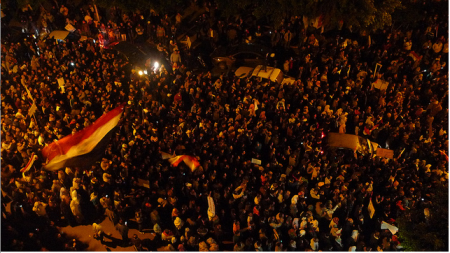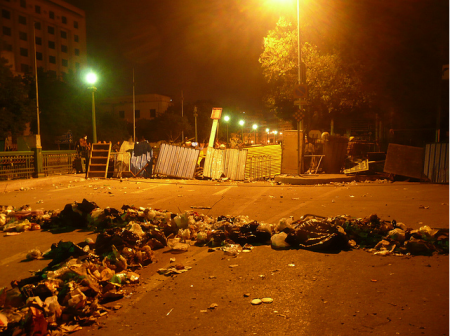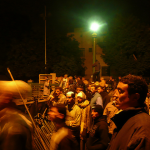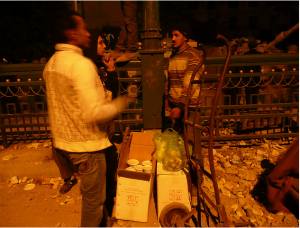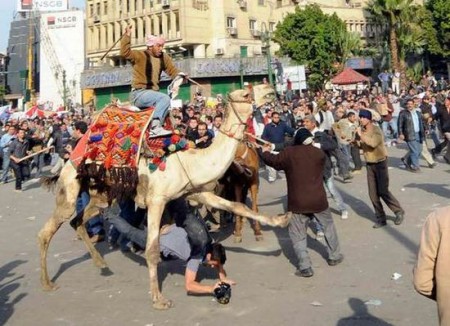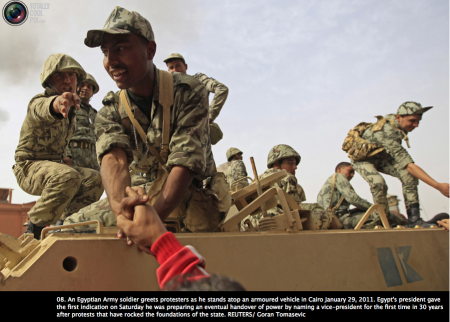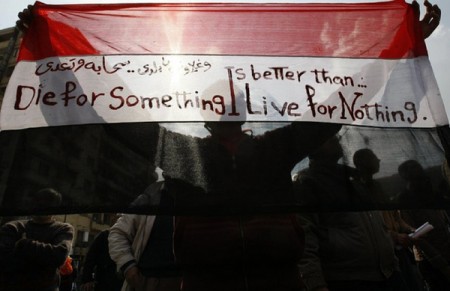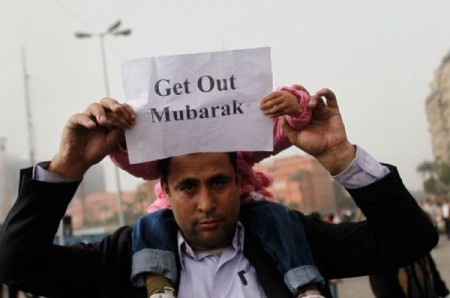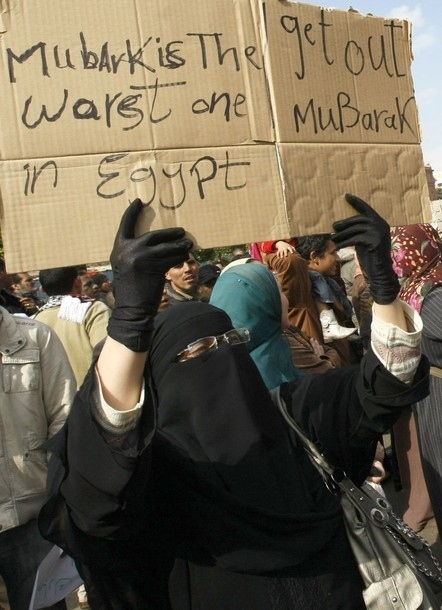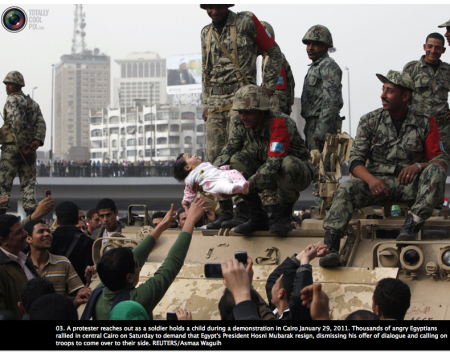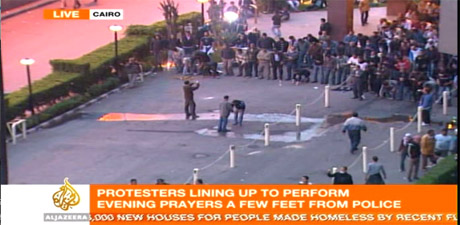For the record, the following was my attempt to simulate the current Egyptian protests. I tried this one afternoon after the class had watched a particularly stirring video of the protesters, and my intention was to give students with a simplified picture of what was going on and who was doing it. We’re not covering revolutions until next year, but the current events in Egypt are too important to ignore.
The Players

1. Hosni Mubarak

Hosni Mubarak is the President of Egypt and autocrat for the last thirty years. I tried to match students, in a rough and ready way, to the personality/characteristics of the people and groups they were supposed to represent, so for Mubarak I picked someone who could think fast on their feet and would play the role to the end, not giving up easily to the demonstrators just because they (as I believe all my students are) are sympathetic to their cause.
2. The Secret Police (also pro-regime “protesters”)

The student playing the secret police was given a weapon, a popsicle stick, with which he could attack the protesters, but was not powerful enough to “kill” anyone on its own. He had to follow the instruction of Mr. Mubarak. I chose one of my more kinetically oriented students for this role, and he spent a lot of time crawling under tables and harassing the protesters as they tried to make their signs.
I tried the simulation in class before the overnight battles where pro-Mubarak “protesters” attempted to take Tahrir Square, so I just briefed the student tasked with this job that he was the dreaded secret police. However, given that the anti-government protesters were able to beat of their attackers, and that police ID was found on captured attackers, I think the pro-government rioters can be lumped in with the secret police.
3. Barack Obama

I chose my student whose major ambition is to be president for this role. He’s quite serious about it, and follows world politics, so could handle the tricky balance of deciding if to support a client who has provided stability (until now), as opposed to supporting the pro-democracy protesters, as his predilections would demand.
4. The Army
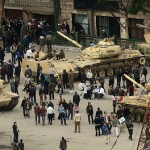
This was another tricky role to play. The top brass tend to support the regime, while the enlisted soldiers and lower-level officers have shown support for the anti-government protesters. There was even a story of a lower level officer joining the protesters because his brother had been killed in the protests. The Army also has the tanks and power to decide things one way or the other if they so choose. They’re also well respected.
I gave the student playing the Army a simulated gun, but told him, in secret, that he only had three bullets, not enough to “kill” all the protesters.
5. The “People”

Despite all the people protesting in Tahrir Square, the vast majority of the population of Cairo are at home, worrying, watching things unfold on TV, trying to figure out what’s going on and what to do.
My quietest student got this job, one who could exhibit a lot of restraint, and be reluctant to do anything radical. They were instructed that their main role was to worry, but, if things got so bad that they had to take sides, whichever side they took would win. They were that powerful, but unaware or fearful of using that power.
6. Student Protesters
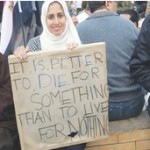
Despite the smile on the face of the student protester in the adjacent image, I instructed the student representing the young student protesters in Tahrir Square that those students were, at the core, angry and frustrated. They are educated so they know a bit of history and about politics. They know what things could be like, how things could be.
7&8. The Muslim Brotherhood

I assigned two students to be the Muslim Brotherhood, given their relative size. They wrote their protest sign using Arabic characters since the Brotherhood, with all their charities, represent the poorer, less educated people (so they’re less likely to have English as a second language).
My students were told they were pious and work closely together, to represent the religious background of the Brotherhood and the discipline of the organization.
9. Middle Class Protesters
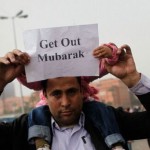
In between the major street battles, when the protests swelled to their largest size, the middle class protesters came out. They have something to loose but want the best for their kids. Some of them brought their kids.
They’re educated and probably have a decent income. Although they’re not the loudest or most angry, these are the kind of people with the high per-capita incomes that you want for any new democracy to succeed.
10. Mohammed ElBaradei

ElBaradei is an interesting character in all the turmoil in Egypt. Westernized and liberal-minded, he’s spent a lot of time working for international organizations but has only focused on Egyptian politics in the last few years. As such, he doesn’t seem to have much of a grass-roots constituency.
I try to get my students to argue with me on the basis of logic rather than anything else, and I chose a student who’s rather good at it for this role. Protests, however, are driven more by logic than emotion. So when this student got frustrated and gave up after trying to organize the protesters, who they were all too busy making their signs, I thought added some unexpected verisimilitude to the simulation. (I had to prod them quite a bit to wrap up on the signmaking, otherwise we’d have gotten nothing else done for the rest of the day).
Missing
Putting all this together quickly did mean that I probably missed some major players, including, I suspect, the important role of the media.
Putting it all together
With the actors in place (and signs finally ready), my protesters marched on the square. The Army was caught in between the protesters and Mr. Mubarak. The “People” watched from the sidelines. Everyone had their say, from the perspective of their group, but I had to do a little coaching to keep them to their assigned tasks.
No one won in our simulation. It ended in a stalemate, because the only actor capable of bringing things to a conclusive end, the Army, could not decide which side to choose. Which is pretty much where Egypt has been for the last week. Until today.
